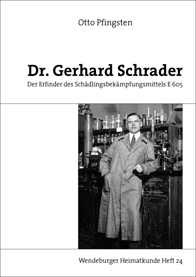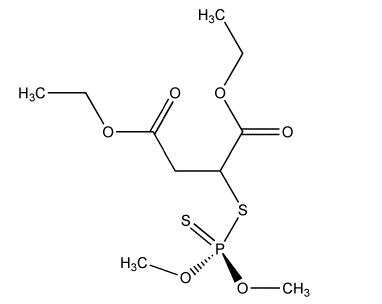Gerhard Schrader: Father of the Nerve Agents
Lessons Learned: Looking Back to Go Forward
A series of articles exploring historical events that provide an important lesson for ensuring a more sustainable and healthy environment. Originally published as a bulletin feature for the newsletter of CHE-WA (Collaborative on Health and the Environment, Washington State chapter); produced by Steven G. Gilbert.
 Dr. Gerhard Schrader (February 25, 1903 - April 10, 1990) was a German chemist who specialized in the discovery of new insecticides. He hoped to make progress in the fight against world hunger but is best known for his accidental discovery of nerve agents and is sometimes called “the father of the nerve agents."
Dr. Gerhard Schrader (February 25, 1903 - April 10, 1990) was a German chemist who specialized in the discovery of new insecticides. He hoped to make progress in the fight against world hunger but is best known for his accidental discovery of nerve agents and is sometimes called “the father of the nerve agents."
On December 23, 1936, Dr. Schrader synthesized Tabun (ethyl dimethylphosphoramidocyanidate, GA) at the I. G. Farbenindustrie laboratory in Leverkusen. He also discovered Sarin, Soman, and Cyclosarin, which are all organophosphate compounds. These highly toxic gases, especially Tabun, were stockpiled by the Nazis during World War II but not used against the Allies. After the war, British intelligence tried to recruit Schrader to develop chemical weapons in the UK, but Schrader remained in Germany and worked for Bayer. In declining the offer, Schrader wrote: "I am glad to be fully engaged again in the field of plant protection. My work during the war in the field of toxic substances never complied with my wishes.” He also wrote, "I should like to assist in improving nutrition, but not in inflicting new wounds."
The problem with organophosphates, as well as carbamates (another class of insecticide), is that they affect an important neurotransmitter common to both insects and mammals. This neurotransmitter, acetylcholine, is essential for nerve cells to be able to communicate with each other. Acetylcholine released by one nerve cell initiates communication with another nerve cell, but that stimulation must eventually be stopped. To stop the communication, acetylcholine is removed from the area around the nerve cells, and an enzyme, acetylcholinesterase, breaks down the acetylcholine. Organophosphates and carbamates block the enzyme and disrupt the proper functioning of the nerve cells. Hence, these insecticides are called acetylcholinesterase inhibitors.

Malathion, a common organophosphate insecticide
Structural differences between the various organophosphates and carbamates affect the efficiency and degree to which the acetylcholinesterase is blocked. Nerve gases are highly efficient and permanently block acetylcholinesterase, while the commonly used insecticides block acetylcholinesterase only temporarily. The toxicity of these insecticides presents significant health hazards, including possible death, and the developing nervous system of children is particularly vulnerable.
Approximately 70% of pesticides used in the United States are organophosphates, mostly in agriculture. While less-toxic pesticides are available, they are not without their risks. Integrated pest management (IPM) is an approach to pest management that can significantly reduce pesticide use. Employed in agriculture, landscape maintenance, and structural pest control, it emphasizes prevention and monitoring of pest problems and considers pesticide applications only when non-chemical controls are ineffective or impractical.


